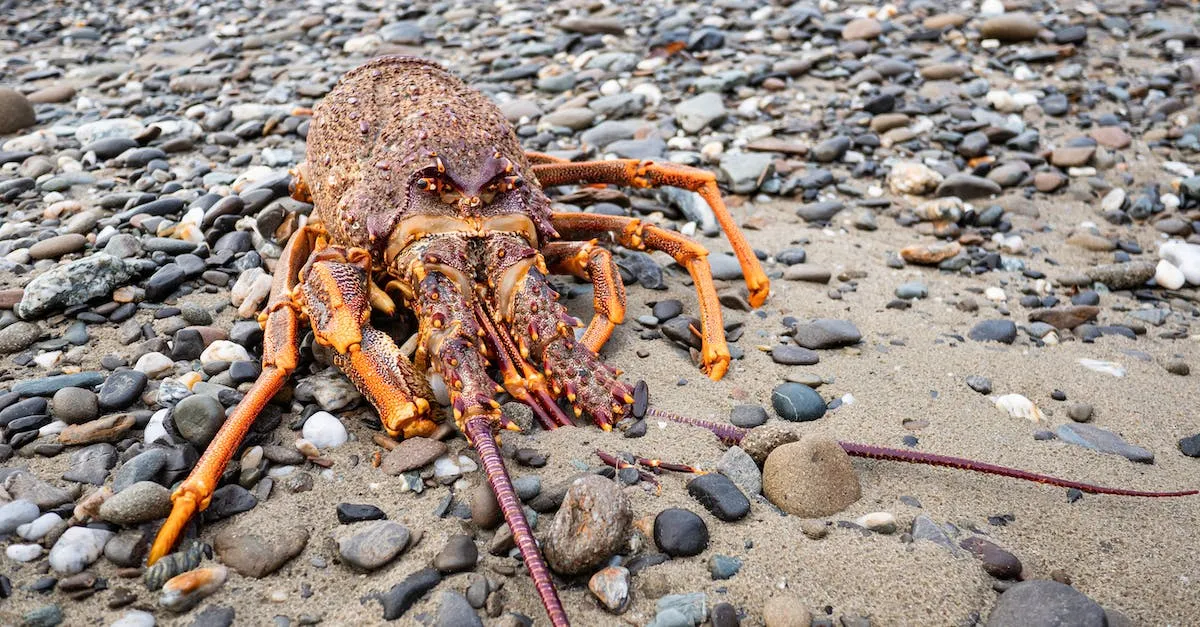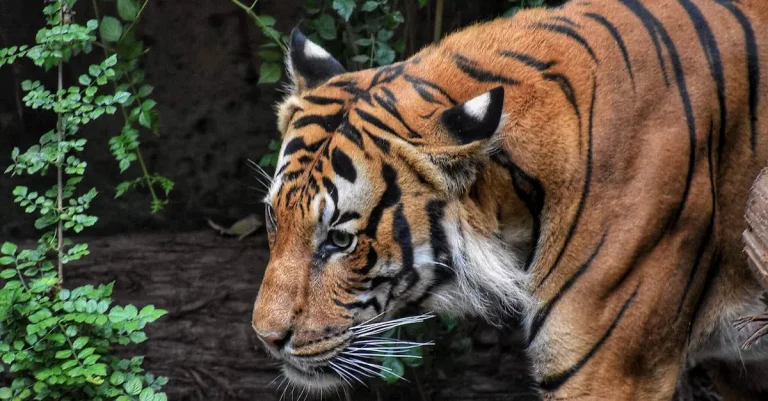Do Florida Lobsters Have Claws?
Lobsters are iconic creatures along Florida’s coastline, but if you take a closer look at their anatomy, you may notice something strange: Florida lobsters don’t have claws like their Maine counterparts. In this comprehensive guide, we’ll explore why Florida lobsters lack claws and how they compare to other lobster species.
If you’re short on time, here’s a quick answer to your question: No, Florida lobsters do not have claws. This is due to biological differences between warm water lobsters like those found in Florida and cold water lobsters like those in Maine.
An Overview of Florida Lobsters
Florida lobsters, also known as spiny lobsters, are a fascinating species that inhabit the warm waters of the Atlantic Ocean and Caribbean Sea. Unlike their cousins, the Maine lobsters, Florida lobsters do not have the iconic large claws typically associated with lobsters.
Let’s explore some interesting facts about these clawless crustaceans.
Spiny Lobsters
Florida lobsters, or spiny lobsters, are part of the Palinuridae family. They are closely related to rock lobsters and slipper lobsters, but they have distinct physical characteristics that set them apart. One of the most notable differences is the absence of large claws.
Warm Water Habitat
These lobsters thrive in warm waters, making Florida an ideal location for their habitat. They can be found in coastal areas, coral reefs, and seagrass beds. With their spiny shells and strong tails, they are well-adapted to navigate through the nooks and crannies of their underwater homes.
Lack of Claws
Unlike their clawed counterparts, Florida lobsters have evolved to rely on their strong tails for defense and propulsion. Their muscular tails allow them to swim backward rapidly, helping them escape from predators or navigate through their environment.
This unique adaptation allows them to survive and thrive in their warm water habitats.
Other Physical Characteristics
While the absence of large claws is a prominent feature of Florida lobsters, they have other physical attributes that make them interesting. They have a pair of long antennae that aid in sensing their surroundings and detecting food.
Additionally, their spiny exoskeleton provides protection from predators, as well as camouflaging them among the rocks and coral reefs where they reside.
Comparison to Maine Lobsters
American Lobsters
Florida lobsters, also known as spiny lobsters, are different from Maine lobsters, which are commonly found in the waters of the northeastern United States. Maine lobsters, scientifically known as American lobsters (Homarus americanus), are a species of true lobsters that have distinctive characteristics.
Cold Water Habitat
Maine lobsters thrive in the cold waters of the Atlantic Ocean, particularly in the Gulf of Maine. They prefer rocky, sandy, or muddy seabeds and can be found at depths ranging from 0 to 150 feet. In contrast, Florida lobsters are found in warmer waters, primarily in the Caribbean Sea and the waters off the coast of Florida.
Large Crushing Claws
One of the significant differences between Florida and Maine lobsters is their claws. Maine lobsters have large, powerful claws that are used for crushing prey and defending themselves. The first pair of claws, known as the crusher claw, is larger and more muscular, while the second pair, called the pincher claw, is used for grasping and tearing.
These claws are a defining feature of Maine lobsters and are highly valued for their meat.
On the other hand, Florida lobsters do not have large claws like their Maine counterparts. Instead, they have long, spiny antennae and a pair of small pincers. While they can use their pincers for defense, they rely more on their speed and agility to evade predators.
Color and Size Differences
Maine lobsters are known for their distinctive dark greenish-blue coloration, which turns bright red when cooked. They can grow to be quite large, with some reaching lengths of over three feet and weighing up to 40 pounds.
Florida lobsters, on the other hand, have a more mottled appearance, with shades of brown, orange, and gray. They are generally smaller than Maine lobsters, averaging around two to three pounds in weight and reaching lengths of about two feet.
However, they are still highly sought after for their sweet and succulent meat.
For more information on Maine lobsters, you can visit the official website of the Maine Lobster Marketing Collaborative at www.lobsterfrommaine.com.
Evolutionary Reasons for Missing Claws
Florida lobsters, also known as spiny lobsters, are a unique species that differ from their clawed counterparts. While most lobsters have prominent claws, Florida lobsters have evolved to lack them. This adaptation has provided several benefits for their survival and success in their habitat.
Predator Defenses
One of the primary reasons for the absence of claws in Florida lobsters is their predator defense mechanism. Unlike clawed lobsters, Florida lobsters rely on their spiny exoskeletons to protect themselves from potential threats.
These spines act as a deterrent, making it difficult for predators to grasp and attack them. This adaptation allows Florida lobsters to avoid predation and increase their chances of survival.
Feeding Strategies
Another reason for the absence of claws in Florida lobsters is their feeding strategy. Instead of using claws to catch and crush prey, these lobsters have evolved to have long, spiny antennae and strong walking legs. They use these specialized appendages to capture and manipulate their food.
This unique feeding strategy allows Florida lobsters to be successful in foraging for food and obtaining nutrition without the need for claws.
Water Temperature
The absence of claws in Florida lobsters can also be attributed to the water temperature in their habitat. Unlike clawed lobsters that primarily inhabit colder waters, Florida lobsters live in warmer subtropical and tropical regions.
In these warmer waters, the lack of claws is advantageous as it helps reduce heat loss. Claws have a larger surface area, which can result in more heat dissipation. By not having claws, Florida lobsters can conserve body heat and thrive in their preferred warmer environment.
Unique Behaviors and Adaptations
Florida lobsters, also known as spiny lobsters, exhibit a variety of unique behaviors and adaptations that help them survive in their marine environment. From their feeding and foraging habits to their locomotion techniques, these fascinating creatures have developed specialized traits to thrive in their habitat.
Feeding and Foraging
When it comes to feeding, Florida lobsters are opportunistic scavengers. They have a diverse diet that includes small fish, mollusks, and even dead animals. However, they are also known to be herbivorous, feeding on algae and other plant matter.
Using their strong claws, they can break open shells and crush hard prey items. It’s important to note that while they do have claws, they are not the large, oversized claws typically associated with other species of lobsters.
Locomotion
Florida lobsters have adapted unique locomotion techniques to move around their environment. Unlike their clawed counterparts, they do not have claws that they can use for walking. Instead, they have a specialized pair of legs called pleopods that they use for swimming.
These pleopods, often referred to as “flippers,” allow them to propel themselves through the water with ease. This adaptation gives them the ability to navigate their surroundings and escape from potential predators.
Social Structures
While Florida lobsters are typically solitary creatures, they do form social structures during their reproductive season. Males will create burrows, often in rocky crevices, where they attract females to mate. These burrows serve as both a shelter and a means of protection.
It’s fascinating to observe how these lobsters communicate and interact during this period, with males using their specialized antennae to signal their availability to potential mates.
Camouflage
One of the most interesting adaptations of Florida lobsters is their ability to camouflage themselves in their surroundings. Their exoskeletons can change color, allowing them to blend in with the rocks and corals of their habitat.
This camouflage helps them avoid detection by predators and increases their chances of survival. It’s truly remarkable how they can adapt their appearance to match their environment and remain hidden from potential threats.
Culinary Uses
Florida lobsters, also known as spiny lobsters, are a delicacy enjoyed by seafood lovers all over the world. Their meat is sweet, tender, and succulent, making them a popular choice for various culinary dishes.
Whether you’re a professional chef or a home cook, there are several ways you can prepare and enjoy these delicious crustaceans.
Preparation Tips
Before diving into the world of Florida lobster cuisine, it’s important to know how to properly prepare them. The first step is to remove the tail from the body. This can be done by gently twisting and pulling the tail away from the body.
Once the tail is separated, you can remove the hard shell by carefully cutting along the top and pulling it away. Inside, you will find the juicy lobster meat that is ready to be cooked.
Another important tip is to avoid overcooking the lobster meat, as it can become tough and rubbery. The ideal cooking time for Florida lobster tails is around 4-5 minutes per ounce. This will ensure that the meat remains tender and flavorful.
Popular Dishes
Florida lobster can be used in a variety of dishes, ranging from simple and elegant to bold and flavorful. One popular dish is lobster bisque, a creamy soup made with lobster meat, vegetables, and spices. It is often served as a starter in fine dining establishments.
Lobster rolls are also a favorite among seafood enthusiasts. These sandwiches feature chunks of lobster meat mixed with mayonnaise, celery, and seasonings, served on a toasted bun. They are a delicious and convenient way to enjoy the flavors of a lobster feast.
For those looking for a more elaborate meal, grilled lobster tails are a fantastic option. The tails can be marinated in a mixture of olive oil, garlic, lemon juice, and herbs before being grilled to perfection.
The smoky flavor from the grill enhances the natural sweetness of the lobster meat, creating a mouthwatering dish.
Nutritional Value
Florida lobsters are not only delicious but also packed with essential nutrients. They are an excellent source of lean protein, making them a great choice for those looking to maintain a healthy diet. Lobsters are also low in fat and carbohydrates, making them a suitable option for those following a low-calorie or low-carb diet.
In addition to protein, Florida lobsters contain various vitamins and minerals, including vitamin B12, zinc, and selenium. These nutrients play a vital role in maintaining a healthy immune system, promoting cell growth, and supporting brain function.
It’s important to note that while lobsters are a nutritious seafood option, they should be enjoyed in moderation due to their high cholesterol content. As with any food, it’s best to consume them as part of a balanced diet.
For more information about the culinary uses of Florida lobsters, you can visit Florida Sea Grant, a reputable website dedicated to educating the public about Florida’s marine resources.
Conclusion
While lobsters around the world may look quite similar, the lack of claws on Florida lobsters reveals key evolutionary adaptations to their warm water environment. Their specialized anatomy and behaviors allow them to thrive in the ocean ecosystems they inhabit. So next time you crack open a Florida spiny lobster, take a moment to appreciate this unique invertebrate perfectly suited to its subtropical home.








